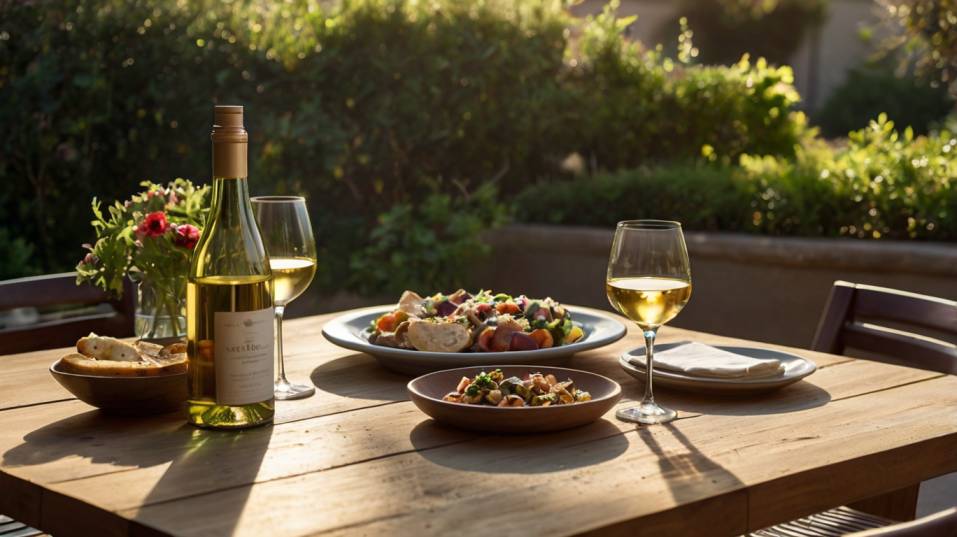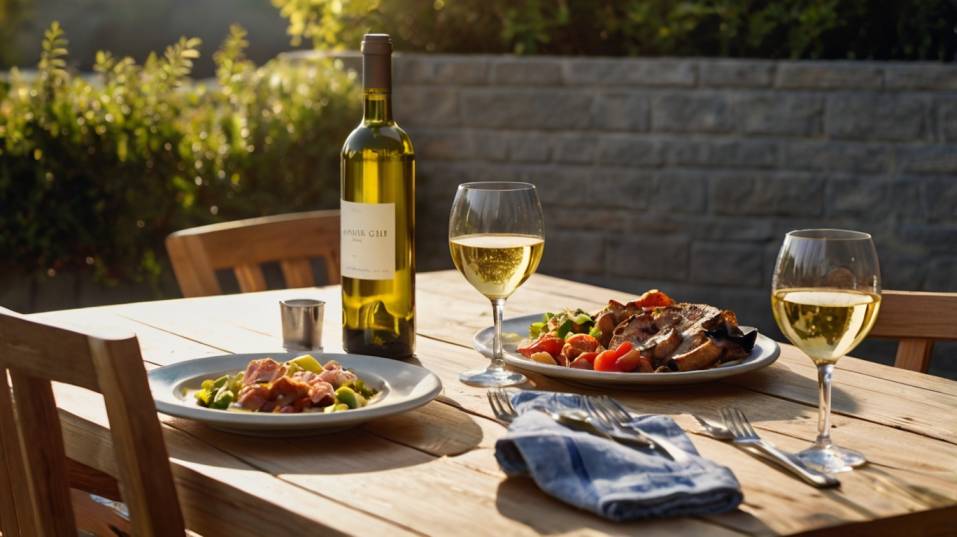Low-Alcohol Wines for Long Lunches
Discover low-alcohol wines built for long lunches. Learn what to try, why it matters, and how to taste with clarity, balance, and confidence.

What if the best wine on the table didn’t shout, but whispered? Low-alcohol wines aren’t about missing out—they’re about leaning in. They sharpen your palate instead of dulling it, letting you taste more and last longer.
Perfect for drawn-out lunches or slow Sundays, these wines offer clarity, not chaos. If you’re early in your wine journey, they just might change how you think about drinking altogether.
Why Lower Alcohol Changes the Game
The alcohol content of a wine isn’t just a number on a label—it directly shapes how the wine tastes, feels, and functions at the table.
Wines with lower alcohol (typically 11% ABV or below) behave differently. They’re often lighter on the palate, brighter in acidity, and more transparent in flavor.
That doesn’t mean weak or watered-down. Done well, they offer just as much complexity as bigger wines—sometimes more—just with less heat and weight.
This matters during daytime meals, especially those that last more than an hour. You want a wine that refreshes without dulling your senses, a wine that opens up your palate without tiring it out.
A long lunch with a heavy, high-octane wine can feel like a sprint through a marathon. But with a bottle under 11%, you pace yourself. You taste better. You last longer.

How Alcohol Builds in a Wine (And What Keeps It Low)
Alcohol in wine comes from sugar in the grapes. The more sugar, the more potential alcohol the yeast can produce during fermentation.
Warmer climates—like California, Southern Italy, or much of Australia—tend to produce riper, more sugar-laden grapes. That usually means higher alcohol in the final wine, often clocking in at 14% or above.
Cooler regions, however, tell a different story. Grapes ripen more slowly in places like the Loire Valley (France), Mosel (Germany), Galicia (Spain), or parts of Northern Italy.
These areas produce grapes with lower sugar and higher acidity. As a result, the wines tend to be naturally lower in alcohol—without sacrificing flavor.
A Smarter Starting Point
If you’re exploring low-alcohol options, looking to cooler regions is a smart starting point. These wines weren’t “made to be low”—they’re naturally balanced that way.
What Low-Alcohol Wines Actually Taste Like
There’s no single flavor profile that defines low-alcohol wines. They’re not a style—they’re a result of conditions, grapes, and technique. That said, many of these wines do share a few consistent traits:
- Higher Acidity: This keeps the wine lively and food-friendly. You’ll feel it as a mouthwatering sensation that makes each bite and sip feel fresh.
- Lighter Body: Less alcohol means less viscosity and weight. These wines often feel agile, energetic, and clean.
- More Transparency: Big wines can blur detail; low-alcohol wines often let subtle notes—like citrus zest, wet stone, or herbal lift—shine through more clearly.
What to Try First
If you’re just getting started, try a dry Riesling from Germany (look for “Trocken” on the label), a Muscadet from the western Loire, or a chillable red like Gamay or Frappato.
These wines offer crisp, clear structure with enough complexity to stay interesting over several hours.
Matching Low-Alcohol Wines with Food
One of the greatest strengths of low-alcohol wines is their flexibility. They rarely overpower, which means they support a wide range of flavors instead of dominating them.
Take a dry white under 11%—maybe a Picpoul de Pinet or a vinho verde. That wine will glide alongside oysters, citrusy salads, or grilled vegetables without clashing.
With just enough acid and lift, it sharpens flavors on the plate and resets your palate between bites.
Chillable Reds and Versatile Pairings
Now imagine a light red at lunch. A lightly chilled bottle of Gamay or Pineau d’Aunis is perfect with charcuterie, roast chicken, or even something as simple as a cheese-and-herb omelet.
The wine stays out of the way until you realize how much better the whole meal tastes with it.
And because you’re drinking something gentler, you’re less likely to hit that tipping point where the food fades and the wine takes over. That’s key to a good long lunch: you don’t want to peak too soon.
Tasting With More Attention (and Less Distraction)
Drinking lower-alcohol wine forces you to notice what’s not there: the burn, the weight, the fog that sometimes settles in after a glass or two.
That clarity lets you pay attention to the things that actually matter—the texture, the balance, the way the wine shifts as it warms in your glass or breathes for a few minutes.
Building Better Palate Memory
This kind of tasting is what builds your wine instincts. You don’t need to memorize regions or master blind tasting.
You just need to slow down, take a moment, and connect what you’re tasting to what you’re feeling. Lower-alcohol wines make that easier. They ask less of you and give more in return.
Common Myths Worth Ignoring
Let’s be clear: low-alcohol doesn’t mean low-quality. Some of the world’s most age-worthy, structured, and expressive wines clock in under 12%.
In fact, many elite producers in Burgundy, Champagne, and the Mosel valley have built their reputations on restraint, not power.
Low-alcohol wines aren’t sweet by default, either. While some German Rieslings and Portuguese whites can be off-dry, most are bone dry, structured, and linear. You don’t need to be afraid of sugar—but you also don’t need to assume it’s there.
Not Just for Summer or “Sipping”
And finally, these wines aren’t only for summer or casual sipping. They can carry a meal. They can evolve with air. And they absolutely deserve a place at a serious table.
Final Thoughts
Choosing a low-alcohol wine isn’t about drinking less—it’s about drinking better. It’s a commitment to staying present, pacing your palate, and actually tasting the wine in front of you. These bottles don’t demand attention, but they reward it.
So next time you plan a long lunch—whether it’s oysters on a patio, pasta with friends, or just a generous Sunday roast—reach for something under 11%.
Choose clarity over clout. And give yourself the time and space to actually enjoy what’s in your glass. Taste slower. Lunch longer. Pay attention. The rest will follow.




